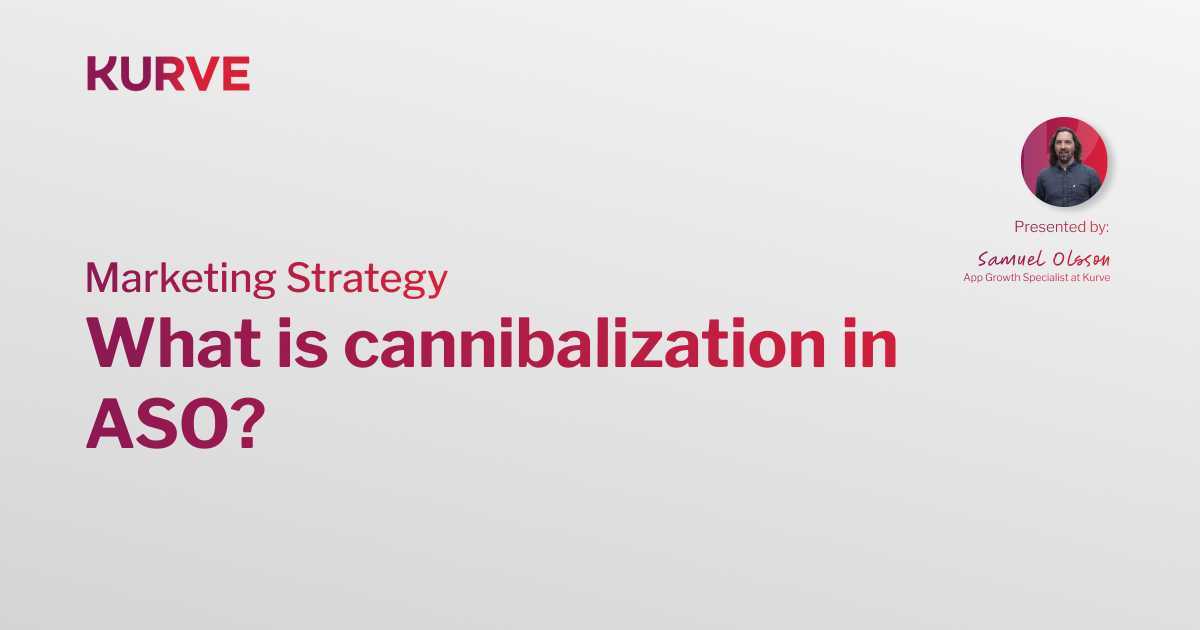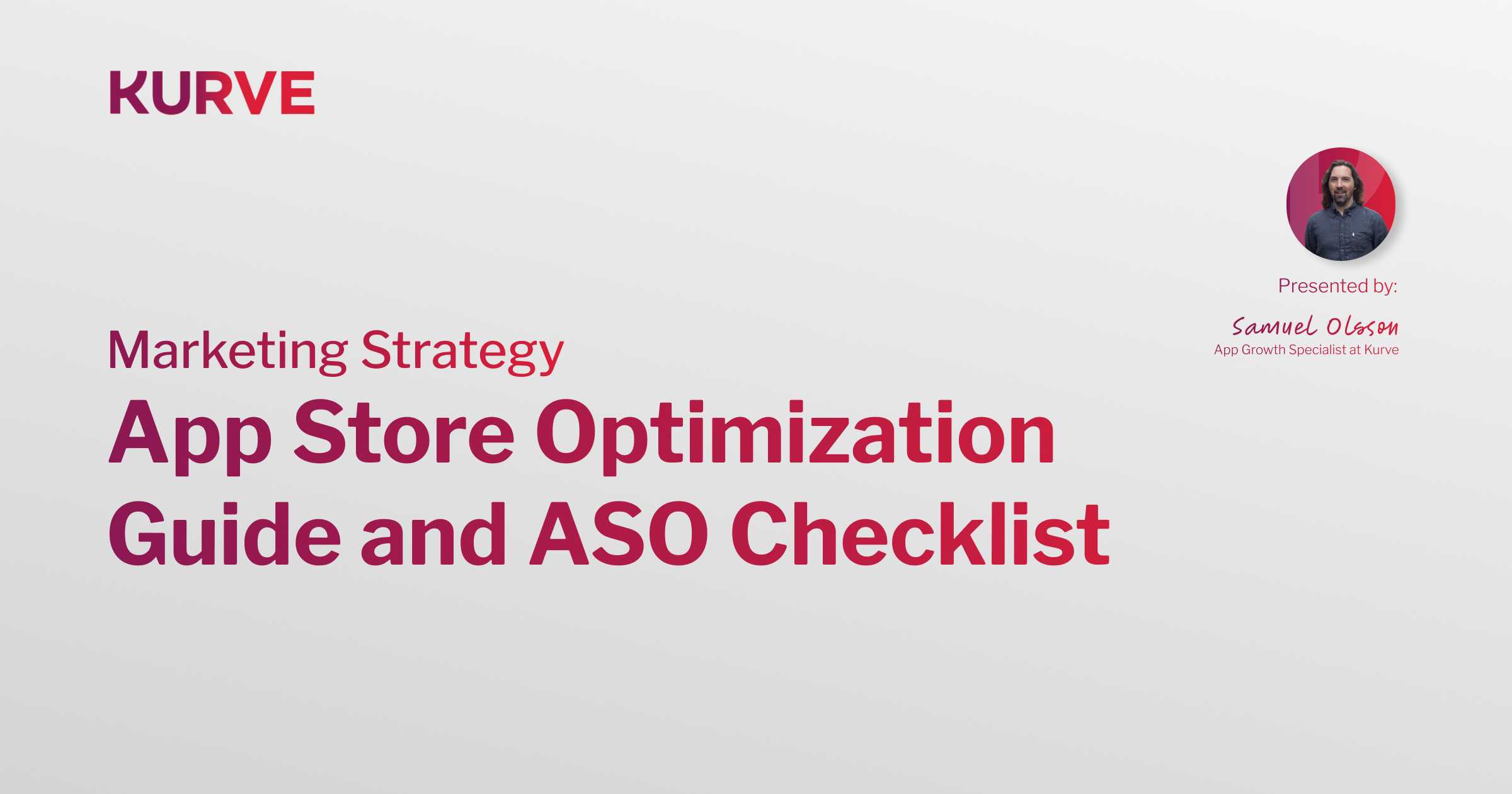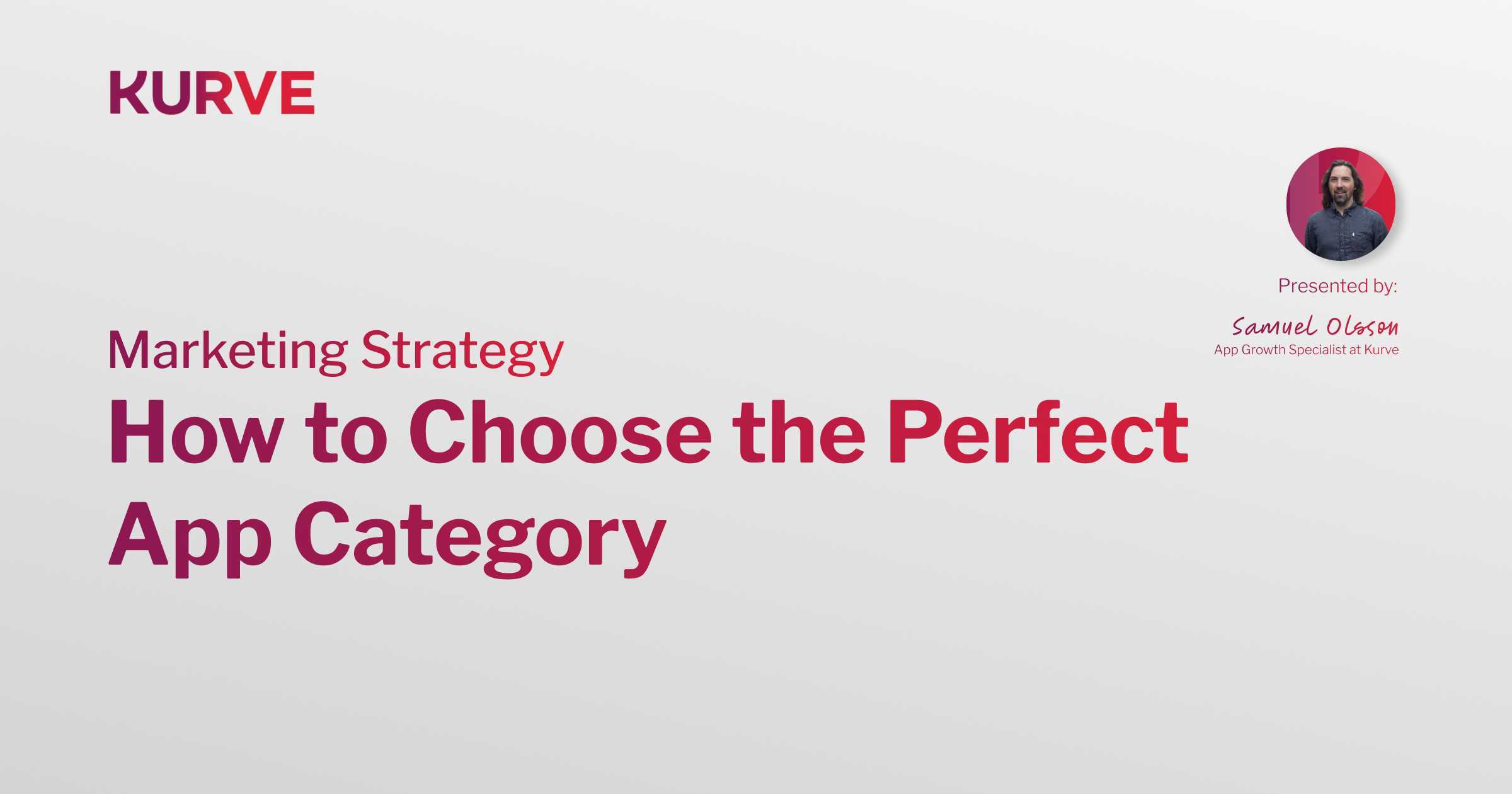15 Best Marketing Strategies for Mobile App Companies
Scaling a mobile app is a complex challenge.
Building an incredible app is just the start, what comes next is ensuring it reaches the right users. With millions of apps competing for attention, standing out requires a strategic approach.
Feeling overwhelmed? Don't worry, we've got you covered.
This guide explores 15 proven marketing strategies designed specifically for mobile apps looking to expand their user base and optimize growth.
The best part?
These strategies are battle-tested and have helped our clients at Kurve successfully grow their apps. Whether you're launching a new app or scaling an existing one, these tactics will help you acquire users, boost engagement, and drive revenue.
What is Mobile App Marketing?

Mobile app marketing encompasses all the strategies used to acquire, engage, and retain app users. It includes optimizing app visibility, running targeted ad campaigns, leveraging organic channels, and improving user experience to drive growth.
Unlike traditional software marketing, mobile app marketing faces unique challenges including shorter attention spans, fierce competition in app stores, and the need to demonstrate value within seconds of download. The mobile-first nature of today's consumers means that app marketing must be optimized for quick decisions and instant gratification.
Key Considerations Before Choosing a Strategy

Choosing the right strategy depends on multiple factors, including:
- App Category: Gaming apps require different strategies than finance or productivity apps. Gaming apps often benefit from influencer partnerships and social media campaigns, while B2B productivity apps may focus more on content marketing and enterprise partnerships.
- Target Audience: Understanding demographics, pain points, and user behavior is crucial. Gen Z users respond differently to marketing than millennials or baby boomers. Consider where your audience spends their time online and what motivates them to download and use apps.
- Budget: Some tactics (like paid ads) require significant investment, while others (like ASO) are primarily organic but require time and expertise. It's essential to balance high-impact paid strategies with sustainable organic growth tactics.
- Growth Goals: Are you focused on installs, engagement, retention, or revenue generation? Different strategies excel at different stages of the user journey. New apps might prioritize awareness and installs, while established apps may focus on monetization and lifetime value.
- Resources and Bandwidth: Consider your team's expertise and available time. Some strategies require specialized skills or ongoing management that may necessitate hiring experts or agencies.
15 Proven Strategies for Mobile App Growth
1. App Store Optimization (ASO)

App Store Optimization is the foundation of mobile app marketing. It involves optimizing your app store listing to improve visibility and conversion rates in app store search results.
ASO encompasses several key elements including keyword research and optimization, compelling app titles and descriptions, eye-catching icons and screenshots, positive reviews and ratings management, and localization for different markets.
Effective ASO can dramatically increase organic downloads. Studies show that 65% of downloads come from app store searches, making ASO crucial for sustainable growth. Focus on high-intent keywords that your target users are likely to search for, and continuously test different creative assets to improve conversion rates.
The key to successful ASO is treating it as an ongoing process rather than a one-time setup. App store algorithms change frequently, and competitor strategies evolve, requiring constant optimization and monitoring.
2. Search Engine Optimization (SEO)

Web traffic converts into app users! Many potential users discover apps through web searches before downloading. Creating a strong web presence through SEO can drive significant app installs.
Develop a comprehensive content strategy that includes landing pages optimized for app-related keywords, blog content addressing user pain points and showcasing app benefits, and technical SEO ensuring fast loading times and mobile optimization.
Consider creating separate landing pages for different user segments or use cases. For example, a fitness app might have dedicated pages for "weight loss apps," "workout tracking apps," and "nutrition apps" to capture different search intents.
Link building is particularly important for app SEO. Seek opportunities for guest posting, app reviews, and partnerships that can provide high-quality backlinks to your app's website.
3. Influencer Marketing

Influencer marketing in the mobile app space involves partnering with content creators who can authentically showcase your app to their engaged audiences.
The key is finding influencers whose audience aligns with your target users. Micro-influencers (10K-100K followers) often provide better engagement rates and more authentic endorsements than mega-influencers. Consider working with influencers across different platforms including YouTube for in-depth tutorials and reviews, TikTok for viral, creative content, Instagram for visual storytelling and behind-the-scenes content, and Twitter for thought leadership and app tips.
Successful influencer partnerships go beyond simple sponsored posts. Provide influencers with early access to new features, exclusive content, or the ability to offer their followers special perks. This creates more authentic and valuable content that drives genuine interest in your app.
Track influencer campaign performance through unique promo codes, custom landing pages, or dedicated tracking links to measure ROI accurately.
4. Paid User Acquisition

Paid user acquisition involves investing in targeted advertising to drive app downloads and user engagement. This strategy allows for precise targeting and scalable growth when executed effectively.
The primary platforms for app advertising include Apple Search Ads for iOS apps targeting high-intent users, Google Ads (including UAC - Universal App Campaigns) for broad reach across Google's network, Facebook and Instagram Ads for detailed demographic and interest targeting, and TikTok Ads for reaching younger demographics with creative video content.
The key to successful paid acquisition is focusing on user quality over quantity. Track metrics beyond just installs, including user retention rates, in-app engagement, and lifetime value. Optimize campaigns based on these deeper metrics to ensure you're acquiring users who will actually use and potentially pay for your app.
Create compelling ad creatives that clearly communicate your app's value proposition. Use app preview videos, user testimonials, and clear calls-to-action to maximize conversion rates.
5. Referral & Viral Loops

Referral programs and viral loops leverage your existing users to acquire new ones, often at a lower cost than paid advertising. This strategy is particularly effective because referred users typically have higher retention rates and lifetime value.
Design referral programs that provide mutual benefits for both the referrer and the new user. Consider offering in-app credits, premium features, or exclusive content as incentives. The reward should be valuable enough to motivate sharing but sustainable for your business model.
Implement viral loops by making sharing a natural part of your app experience. For example, a photo editing app might add a subtle watermark encouraging downloads, or a fitness app might allow users to share achievements with friends.
Make the referral process as simple as possible. Provide multiple sharing options (social media, email, direct links) and ensure the referral experience is seamless for new users.
6. Social Media & Community Engagement
Building a strong social media presence and engaging community helps create brand awareness, drive downloads, and foster user loyalty. Different platforms serve different purposes in your overall strategy.
Use social media to share app updates and new features, user-generated content and success stories, behind-the-scenes content and company culture, educational content related to your app's niche, and customer support and community management.
Consider creating dedicated communities on platforms like Discord, Reddit, or Facebook Groups where users can connect, share tips, and provide feedback. These communities can become valuable sources of user insights and brand advocacy.
Engage authentically with your audience by responding to comments, sharing user content, and participating in relevant conversations. Social media success for apps comes from building genuine relationships rather than just pushing promotional content.
7. Email & Push Notifications
Email marketing and push notifications are essential for user retention and re-engagement. These direct communication channels allow you to nurture relationships with users and drive ongoing app usage.
Develop a comprehensive email strategy that includes welcome sequences for new users, feature announcements and app updates, educational content and tips, re-engagement campaigns for inactive users, and promotional offers and exclusive content.
Push notifications should be strategic and valuable rather than annoying. Use them to provide timely reminders, share personalized content, announce new features or content, offer exclusive deals or promotions, and guide users through key app features.
Personalization is crucial for both email and push notification success. Use behavioral data to send relevant, timely messages that add value to the user experience.
8. Video & UGC Content

Video content is increasingly important for app marketing, with users preferring visual demonstrations over text descriptions. User-generated content (UGC) adds authenticity and social proof to your marketing efforts.
Create various types of video content including app demo videos showing key features, tutorial videos helping users maximize app value, user testimonial videos providing social proof, behind-the-scenes content humanizing your brand, and animated explainer videos simplifying complex concepts.
Encourage and showcase user-generated content by creating branded hashtags, running contests and challenges, featuring user content in your marketing, offering incentives for content creation, and making it easy for users to share their experiences.
Video content performs well across all platforms and can be repurposed for different channels. A single demo video can be used for app store listings, social media posts, website content, and paid advertisements.
9. Partnerships & Brand Collaborations
Strategic partnerships can significantly expand your reach and provide access to new user bases. Look for collaboration opportunities with companies that serve similar audiences but aren't direct competitors.
Types of partnerships to consider include cross-promotion with complementary apps, integration partnerships that enhance functionality, content collaborations with brands or creators, co-marketing campaigns with similar companies, and sponsorship opportunities at relevant events or with relevant content.
When evaluating potential partnerships, consider audience overlap, brand alignment, mutual benefits, and long-term relationship potential. The most successful partnerships create win-win scenarios that provide genuine value to users.
Document partnership agreements clearly, including expectations, deliverables, timelines, and success metrics to ensure smooth collaboration.
10. Freemium & Subscription Models
Freemium and subscription models can serve as powerful marketing tools by lowering the barrier to entry and demonstrating value before asking for payment. These models can drive higher download numbers and create opportunities for upselling.
Design your freemium model to provide enough value to attract users while creating clear incentives to upgrade. The free tier should solve real user problems but leave room for enhanced functionality in paid tiers.
For subscription models, focus on demonstrating ongoing value through regular content updates, new features, exclusive access, and personalized experiences. Use in-app messaging and email campaigns to highlight premium benefits and encourage upgrades.
Offer free trials for premium features to let users experience the full value of your app. This can significantly increase conversion rates compared to asking for immediate payment.
11. Retargeting & User Re-engagement
Retargeting campaigns help re-engage users who have shown interest in your app but haven't downloaded it, or who have downloaded but become inactive. These campaigns often have higher conversion rates than broad acquisition campaigns.
Implement retargeting strategies including website visitor retargeting for users who visited your app's website, lapsed user campaigns for previously active users, cross-platform retargeting reaching users across different devices, and sequential retargeting with progressive messaging.
Create compelling retargeting creatives that address potential user concerns, highlight new features or updates, offer special incentives or promotions, and showcase user testimonials or success stories.
Use different messaging for different user segments. New users need to understand your app's value, while lapsed users might need reminders about features they haven't tried or updates they've missed.
12. Localization & International Growth
Expanding to international markets can significantly increase your user base, but requires careful localization beyond simple translation. Consider cultural differences, local preferences, payment methods, and market-specific features.
Effective localization includes translating app content and store listings, adapting cultural references and imagery, adjusting pricing for local markets, complying with local regulations and requirements, and creating region-specific marketing campaigns.
Research target markets thoroughly before expanding. Consider factors like smartphone penetration, app usage patterns, competition levels, monetization potential, and cultural fit for your app concept.
Start with markets that are similar to your home market or where you have existing user interest. Use analytics to identify countries where you're already seeing organic growth.
13. In-App Gamification & Rewards
Gamification elements can increase user engagement and create viral marketing opportunities. When users are excited about their progress or achievements, they're more likely to share their experiences.
Implement gamification features like achievement systems and badges, progress tracking and streaks, leaderboards and social competition, point systems and rewards, and challenges and missions.
Make gamification elements social by allowing users to share achievements, compare progress with friends, participate in group challenges, and showcase their success on social media.
Ensure gamification enhances rather than distracts from your core app functionality. The best gamification feels natural and adds value to the user experience.
14. Web-to-App Conversion Strategies
Many users discover apps through web experiences, making web-to-app conversion a critical strategy. Optimize your website and web presence to drive app downloads effectively.
Implement conversion strategies including smart app banners on your website, deep linking to connect web and app experiences, progressive web apps as stepping stones to native apps, email campaigns promoting app downloads, and content marketing that highlights app-specific benefits.
Create landing pages optimized for app downloads with clear value propositions, social proof, easy download links, and compelling visuals. These pages should load quickly and provide compelling reasons to download your app.
Use web analytics to identify high-traffic pages and optimize them for app conversion. Pages with engaged users are prime opportunities for app promotion.
15. A/B Testing & Data-Driven Optimization
Continuous testing and optimization is essential for maximizing the effectiveness of all your marketing strategies. A/B testing allows you to make data-driven decisions and continuously improve performance.
Test various elements including app store listings (icons, screenshots, descriptions), ad creatives and copy, email subject lines and content, push notification messaging and timing, landing page designs and copy, and pricing strategies and offers.
Implement proper testing methodologies with clear hypotheses, statistical significance requirements, sufficient test durations, and proper segment isolation. Don't make decisions based on insufficient data or personal preferences.
Create a culture of experimentation where testing is ongoing rather than occasional. Small improvements across multiple areas can compound into significant growth gains.
Use analytics tools to track user behavior throughout the entire funnel, from awareness to conversion to retention. This data should inform all your marketing decisions and strategy adjustments.
Key Takeaways
Effective mobile app marketing combines organic, paid, and retention-focused strategies tailored to your specific app, audience, and goals. Success requires understanding your users deeply, testing continuously, and adapting to changing market conditions.
The most successful app marketing strategies focus on providing genuine value to users rather than just driving downloads. Quality users who engage with and potentially pay for your app are more valuable than large numbers of users who quickly uninstall.
At Kurve, we specialize in helping apps scale through proven, data-driven marketing strategies that drive sustainable growth and maximize return on investment.
Ready to unlock your app's full growth potential? Get in touch with our team to develop a customized marketing strategy that drives real results for your mobile app.


